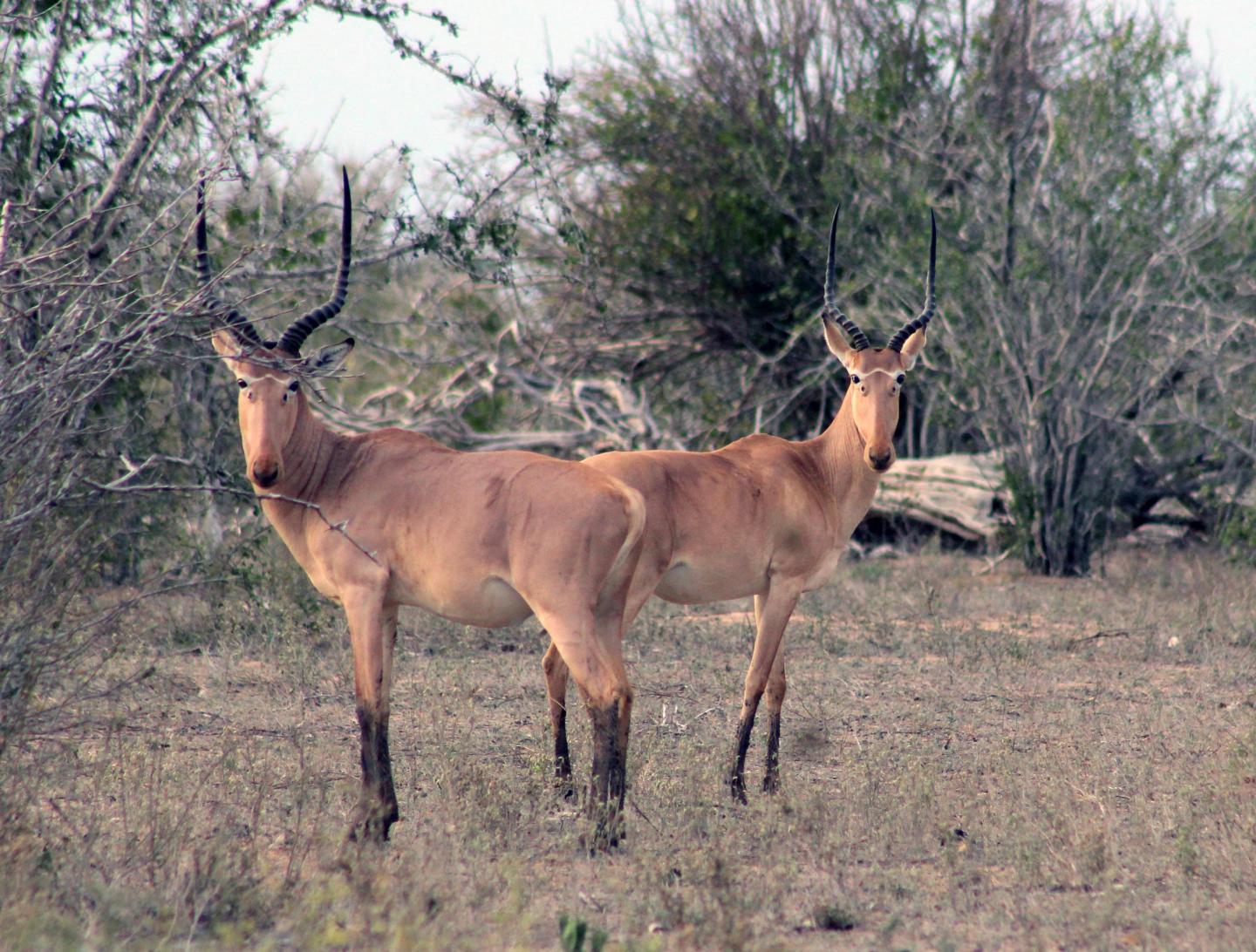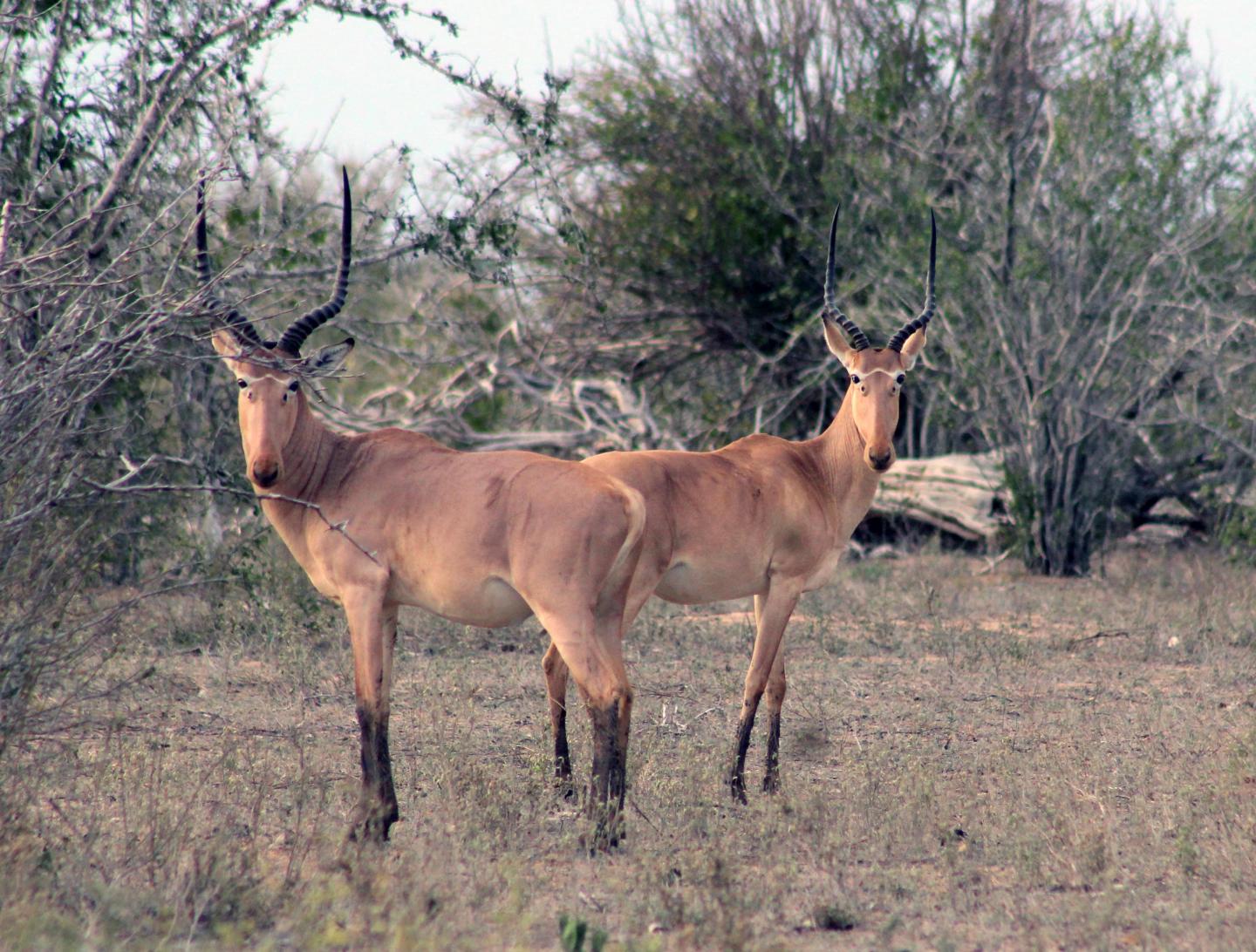
Credit: Abdullahi Hussein Ali
University of Wyoming researchers took a big step toward solving the mystery of the decline of hirola, a rare African antelope, conducting wildlife research in one of the most formidable environments — the border region of eastern Kenya and southern Somalia.
"In spite of a long history of coexistence between hirola and local people, we think overgrazing, loss of elephants from poaching and lack of fires have taken away food supplies for hirola — a large antelope that specializes on grass," says Abdullahi Hussein Ali, a UW second-year Ph.D. ecology student at the time of his research. "Unlike efforts to 'green' the desert in many areas, it is the encroachment of shrubs into grasslands that is impacting hirola."
Ali, now a postdoctoral associate at Utah State University, was lead author of a paper, titled "Resource Selection and Landscape Change Reveal Mechanism Suppressing Population Recovery for the World's Most Endangered Antelope" that appeared in the Feb. 15 (today) issue of the Journal of Applied Ecology. The publication is a bimonthly journal of the British Ecological Society that publishes high-impact papers on the interface between ecological science and the management of biological resources. The article first appeared in the journal's online edition Feb. 3.
Jacob Goheen, a UW associate professor in the Department of Zoology and Physiology, was a co-author of the paper.
Between 2012-15, the researchers used GPS collars to track more than 50 hirola from seven herds, and found that the antelope prefer grassland habitats. Using a time series of satellite imagery, the authors showed a 250 percent increase in tree cover since the mid-1980s in the hirola's native range. This "tree encroachment" occurred at the expense of grassland habitats.
Ali and his group also looked at dozens of kill sites made by lions, cheetahs and other predators of hirola. These kill sites were found in open areas — the very areas where hirola typically spend their time foraging on grasses — and not forested areas. The researchers concluded that habitat was the major reason why hirola have declined and remain rare for the past 40 years.
Hirola numbers dwindled to fewer than 500 by the mid-1980s, and their populations have remained precariously low since. The reasons for their low numbers have puzzled wildlife biologists and conservationists. The Abdallah and Abduwaq — Somali clans that live alongside hirola — treat hirola as near-mythical beasts, indicators of good grass.
"Fortunately, solutions for hirola recovery are at hand, and it all starts with people," Ali says. "Because hirola are indicators of healthy rangelands, local communities welcome them. We are working with these communities to find solutions that benefit hirola, other wildlife and people."
Goheen, Ali's former Ph.D. supervisor at UW, commends his former student for his persistence.
"Hirola don't live anywhere that's convenient for outsiders to work," Goheen explains. "This region has seldom been visited by western scientists due, in part, to political uncertainty. The fact that Ali pulled off this study under such challenging conditions is just what the hirola will need if they are to survive — a friend in hard times."
These challenges haven't stopped Ali, who is forging ahead with hirola projection and community engagement. In the second year of his Ph.D., Ali founded the Hirola Conservation Programme and is currently its director. Through this organization, Ali and his team are active in restoring grasslands throughout eastern Kenya through elephant conservation, clearing of trees and grass reseeding — solutions that will provide benefits to both people and wildlife.
###
The study was supported through generous contributions from many institutions, including UW's Biodiversity Institute, the British Ecological Society, the Saint Louis Zoo, UW Department of Zoology and Physiology, and the Zoological Society of London.
For more information, email Ali at [email protected] or [email protected]; or Goheen at [email protected].
Media Contact
Jake Goheen
[email protected]
307-509-0280
http://www.uwyo.edu
############
Story Source: Materials provided by Scienmag





